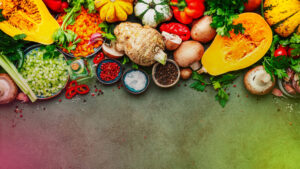What is Healthy Food and Its Benefit?
Food is the meal that helps the human body to grow, replenish and generate thermal energy, keep the body healthy and fresh and increase performance. Diet is the main source of energy for the human body. Every living thing needs diet to survive. Meal is made up of proteins, carbohydrates, water and lipids.
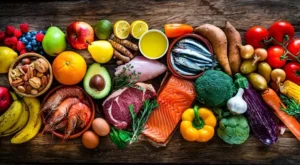
What is the function of food?
(1) Helps in the formation and proper growth of the human body.
(2) Helps to replenish body waste.
(3) Helps to increase heat production and work force in the body.
(4) Helps in regulating the internal functions of the body.
(5) Helps to increase immunity in the body.
Types of food
According to the function of meals in the human body, meals can be divided into two categories.
For example:
(1) Body-nourishing meals: Meals which help in body structure, growth and energy production are called body-nourishing meals. For example: meat, sugars, fats or oils.
(2) Body-preserving meals: Meals which protect the body from disease by increasing the immunity of the body, but not conducive to energy production are called body-preserving meals. For example: vitamins or nutrients, water, minerals
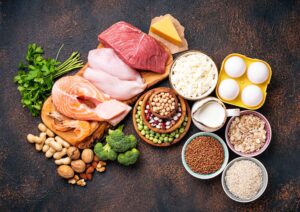
Food ingredients
There are 6 ingredients in meals. Namely: sugars or carbohydrates, meat or proteins, fats or lipids, nutrients or vitamins, mineral salts and water.
Sugars or carbohydrates
The elements that make up sugars or carbohydrates are carbon, hydrogen and oxygen. Hydrogen and oxygen are in the ratio of 2:1 in sugars. Carbohydrates are available in different forms in different meals such as rice, potatoes, wheat, carrots, cabbage, green beans, corn etc. Sugar is found in the form of glucose in apples, dates, grapes etc. Ripe fruits such as oranges, mangoes, bananas, etc. contain fructose as a sugar. Sweets, sugar, molasses etc. contain sugars in the form of sucrose. Lactose is a sugar found in milk. The liver and muscles of sheep store carbohydrates as glycogen or animal protein.
Scientists divide carbohydrates into three groups according to the presence of one or more simple sugar units in each molecule. Namely:
(1) Monosaccharides: Sugars which consist of only one molecule are called monosaccharides. Namely: Galactose, Glucose, Fructose
(2) Disaccharides: Sugars formed by two molecules are called disaccharides. Eg: Maltose, Sucrose and Lactose.
(3) Polysaccharides: Sugars made up of many molecules are called polysaccharides. Eg: Cellulose, Starch and Glycogen.
Sugar
Carbohydrates play an important role in providing nutrients to the body. Cellulose helps in digestion of meals by increasing the efficiency of the body and producing heat energy and helps in eliminating constipation. 1 gram of sugar produces 4 kcal of heat. per 100 ml. The normal amount of glucose in the blood is 80-120 mg. Humans can live long enough to live in a healthy body without consuming animal protein and only eat a large amount of protein. Honey, fruit juice, etc. are monosaccharides. Sugar and milk etc. are two macro-carbohydrate meals.
Flour, rice, green leafy vegetables, potatoes, vegetables, etc. are monosaccharide meals. We get protein mainly from wheat, rice, and potatoes. Simple carbohydrates are very important for human nutrition.
protein or meat
Protein molecules are made up of numerous amino acids. About 22 amino acids have been found so far. Amino acids contain hydrogen, carbon, oxygen and nitrogen. Proteins often contain sulfur and phosphorus. Animal proteins are found in eggs, fish, meat, chicken, milk etc. Wheat, pulses and soybeans etc. contain vegetable proteins. Scientists call animal protein the first class of protein because it contains more essential amino acids. We can divide protein into 3 parts. A simple protein is a protein that does not attach to any other type of material. Examples are histone, gliadin, protamine, albumin etc. Examples are lipoprotein, phosphoprotein, hemoglobin and hemocyanin etc.
A type of protein produced during the digestion of protein-rich food in the digestive tract is called soluble protein. Eg: Peptide, Peptone etc. Protein helps in proper growth of the body, cell formation and repair. Protein produces heat energy in the body. One of the functions of protein is to meet the needs of essential amino acids. About 100-150 grams of protein per day is essential for an adult.
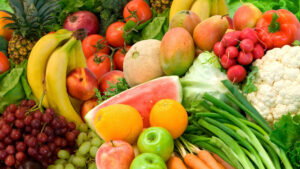
Affection
Carbohydrates have a lower oxygen ratio than sugars. Like sugars, the ratio of hydrogen and oxygen in 2:1 ratio is not present in the sugars. For example: Mustard seeds, cotton seeds, sesame seeds, coconuts, peanuts, peanuts, peanuts etc. contain vegetable fats or oils. Animal fats are available in large quantities from lard, ghee, butter, dal. Fats that are liquid at normal temperatures are considered oils. Lubricants are insoluble in water.
Because it is lighter than water, love floats on water. Scientists identify fats that are not attached to any other material as simple fats. For example, simple fats include lanolin and beeswax. When other substances combine with simple fats, they form compound fats. Eg: Amino-lipids, Phospholipids etc. The main function of fat-based meal is to regulate the heat of the human body and generate heat energy. Fat is stored in fat as a future meal source. Fats help keep vitamins soluble and absorb them. Fat helps in the secretion of bile from the liver and pancreatic juice from the pancreas. Fats or lubricants lubricate the rectum and anus to help pass stool. Cholesterol or fat produces hormones called vitamin D, estrogen, and testosterone. Oxidizing 1 gram of fat produces 9.3 kilocalories of energy. About 50 grams of lubricant per day is essential for an adult.
vitamins
It is special organic nutrients that help normal nutrition and growth of the human body and increase immunity in very small amounts in normal food. For example: Vitamin D, Vitamin A, Vitamin E, Vitamin K. For example: Vitamin C, Vitamin P, Vitamin B.
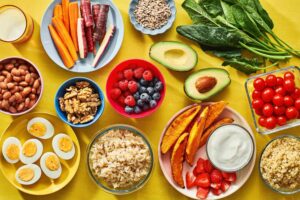
Abundant in animal liver, fish liver oil, fish, meat, eggs, milk, nuts, vegetable oil, red flour, carrot, gram, beet, mung bean, tomato, cauliflower, spinach, cabbage, mango, apple, lemon, amlaki etc. Vitamins are available. Milk, butter, fat, eggs, carrots, mangoes, jackfruit, colorful vegetables, lean fish etc. are rich in vitamin A. Red flour, peas, cauliflower, peanuts, bean seeds, green vegetables etc. contain vitamin B. Vitamin C is available from guava, bitter lemon, kamaranga, orange, amra, pineapple, green pepper, amlaki etc. Vitamin D is found in milk, eggs, liver, marine fish, fish oil, edible oil etc.
Mineral salts
Inorganic meal ingredients are mineral salts. Mineral salts meet the lack of natural nutrients in the body. Mineral salts do not provide energy. However, mineral salts are very necessary to increase the immunity of the organism. Mineral salts are essential elements for body cells and body fluids. Human body contains mineral salts like iron, calcium, zinc, sulfur, sodium, potassium, iodine etc. These elements never stay in the human body as basic elements. They combine with other substances in varying amounts in the human body to form salts of various organic and inorganic compounds. Mineral salts regulate body composition and internal body functions. Mineral salts are an essential element for the formation of bones, muscles, teeth, enzymes and hormones.
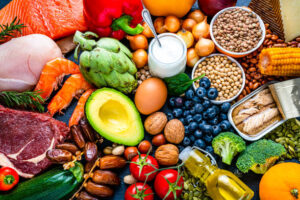
The water
Another name for water is life. Water is second only to oxygen in life support. A component of meals is water. Water is essential for body nutrition. The structure and inner workings of the body cannot function without water. Namely: body composition, regulation of internal functions of the body, excretion of pollutants from the body. This is discussed in detail:
(1) Body formation: Formation and maintenance of body cells is not possible without water. 45%-60% of an adult’s body weight is water.
(2) Regulation of internal body functions: Without water, no chemical action can take place inside the body. Water acts as a solvent in the body. Blood circulation in the body is possible because of water. Nutrients and oxygen transported in blood can reach body cells through water. All types of body juices dissolve mineral salts. The small intestine absorbs digested food material dissolved in water into the blood.
(3) Excretion of pollutants: Water helps to remove pollutants from the body. The body excretes a large amount of water along with pollutants such as sweat and excrement. Thus, the body releases a large amount of water every day. Moreover, factors such as weather, age, exercise, eating habits etc. affect water demand. An adult person needs to drink two to three liters of water daily. For example, if a person’s daily caloric requirement is 2000 kcal, he needs two liters of water daily.
